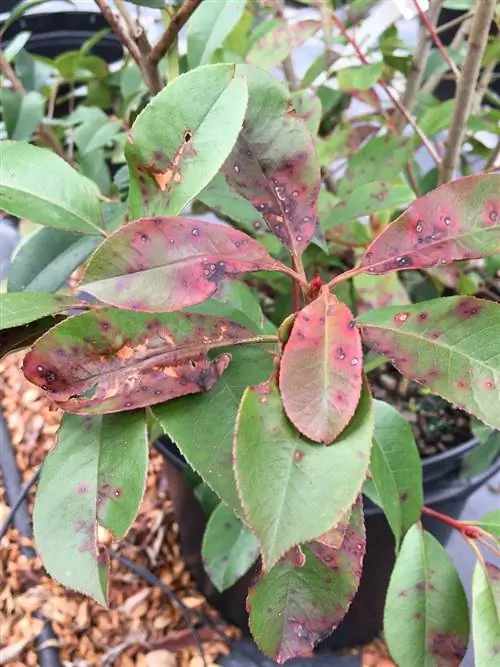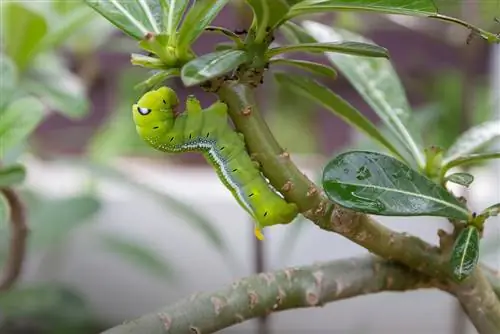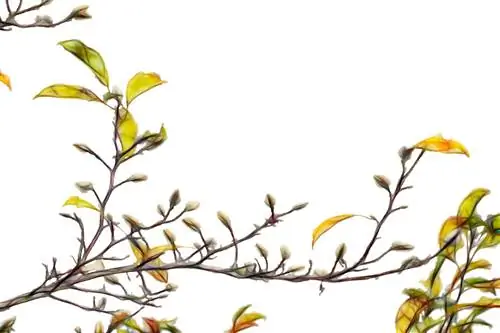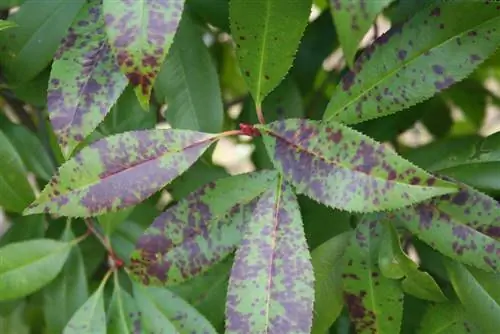- Author admin [email protected].
- Public 2023-12-16 16:46.
- Last modified 2025-01-23 11:21.
Loquats are extremely robust and are rarely affected by diseases. Weakened plants have a higher risk of infection with various diseases, which can be controlled with simple means.
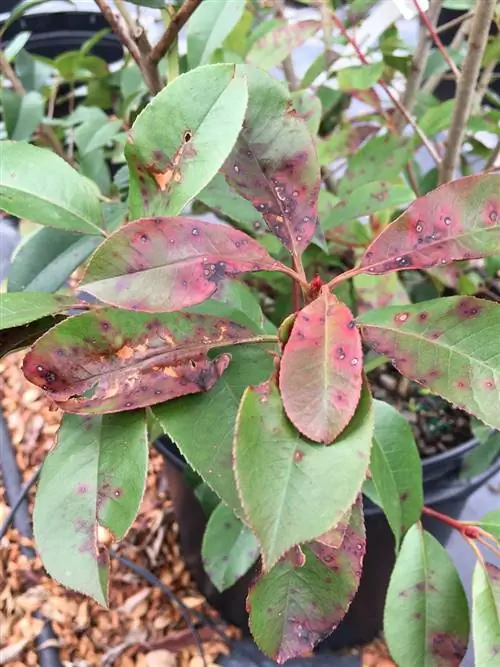
What diseases can affect loquats and how can they be prevented?
Cotoneaster diseases include leaf brown, apple scab, powdery mildew and fire blight. To prevent them, sufficient planting distance should be maintained, watering at the base of the trunk and strengthening agents such as nettle or horsetail decoction should be used.
These diseases can occur:
- Leaf Tan
- Apple scab
- Mildew
- Firebrand
Leaf Tan
This disease is caused by a fungus whose spores spread with the wind. The fungus prefers to grow in damp and rainy weather. If a plant is diseased, it develops mottled discoloration on its leaves. An environment with high humidity promotes the spread of the pathogen. Shrubs that are too dense do not have sufficient ventilation, so the fungus prefers to spread in compact hedges. Infection of other plants is possible through affected fallen leaves.
Make sure there is sufficient planting distance. Loquats should be watered at the base of the trunk so that the leaves do not get wet. Strengthening the bushes with a nettle decoction makes them more resilient. Weakened individuals are more often colonized by the fungal spores. You can combat leaf brown by spraying the infected leaves with a copper sulfate treatment (€17.00 on Amazon).
Apple scab
In months with high rainfall, there is a risk that loquats will be affected by apple scab. This fungal disease manifests itself in greenish spots. In the case of a severe infestation, the spots expand, which leads to the death of cell tissue in the leaf. Rain promotes the spread of the disease. The fungi spread through a special form of spores that are formed asexually.
It is important to act quickly as the fungus spreads quickly in warm temperatures combined with high humidity. Affected leaves should be removed and burned so that the fungus cannot spread further. Disposal with household waste is also possible. Then spray the tree with a triforin-based fungicide.
Mildew
Downy mildew also loves humid conditions. This fungus occasionally attacks weakened loquats in the rainy summer months. The disease can be recognized by a white coating that appears on both the top and bottom of the leaves. In the event of a severe infestation, there is a risk that the affected leaves will die
Mildew depends on high humidity. As soon as the air becomes drier, the fungus can no longer spread. Remove infected leaves and give the plant a horsetail decoction to support its vitality. To prevent disease, you should ensure sufficient spacing when planting.
Firebrand
Dried flowers and leaves or black discoloration indicate fire blight. This disease is caused by a bacterium that enters the plant organism through injured areas on the branches or through the flowers. The disease is mainly widespread in Switzerland. By shipping plants, infected plants can spread the bacterium.
This disease is considered reportable even if there is only a suspicion of infection. So far there are no treatment measures. Since it spreads quickly, you should act quickly at the first signs.

